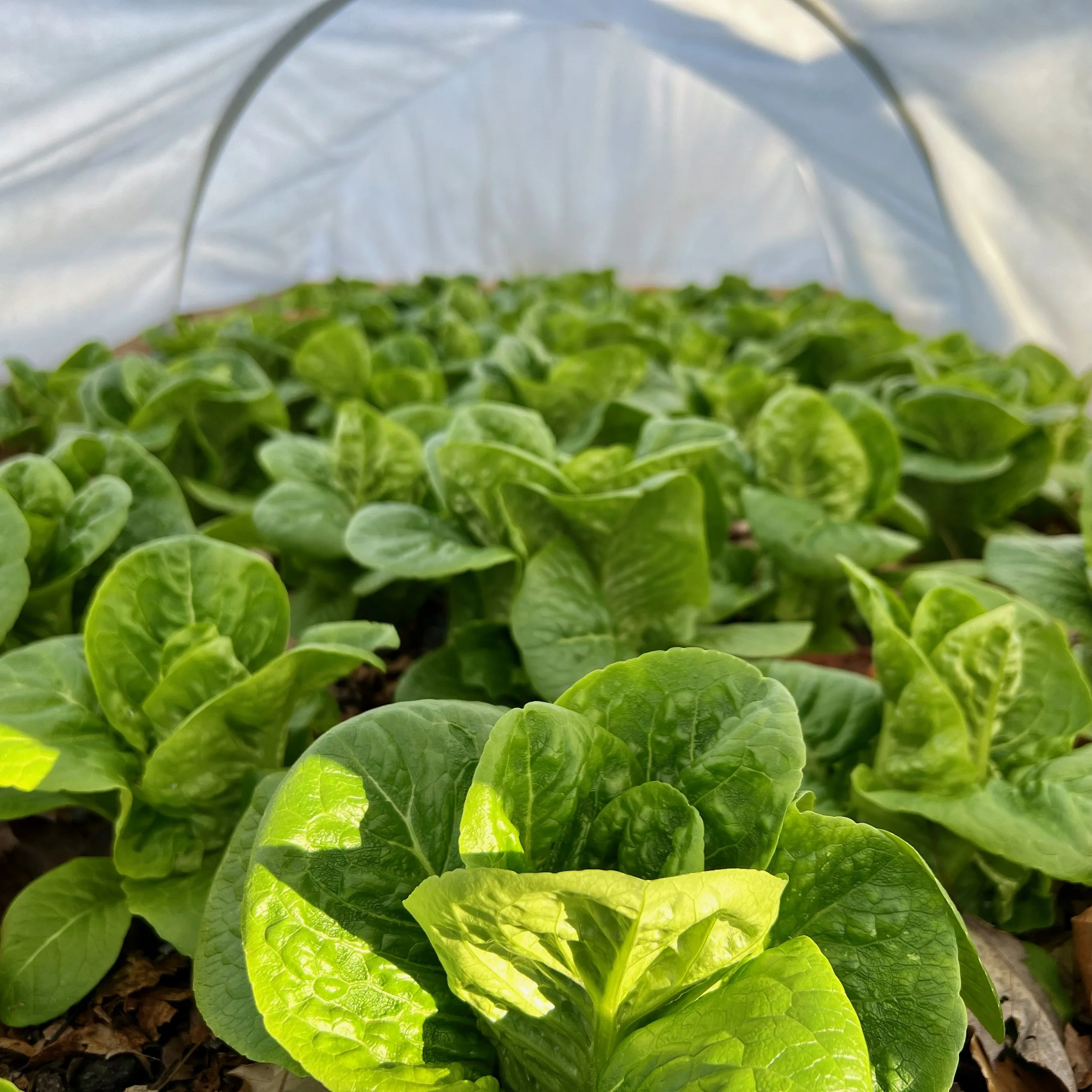Extending the Season
By Kymisha Montgomery, CGC Urban Agriculture Coordinator
Fall usually symbolizes the end of the growing season and time to put your garden to bed. Many of us typically only grow three or four months of the year…when there’s potential to grow at least seven to nine months here in zone 6! Starting your garden early in the spring uses the same techniques and plants as finishing your year off growing into the fall and early winter. The keys are to choose crops that love cooler temperatures over warm or hot and to protect them.
Cool season crops have two significant distinctions when compared to warm season crops that make them perfect candidates for season extending. First, they need cooler temperatures in order to germinate, and second, they can tolerate low temperatures.
Some of the most common crops to plant at this time are in the Brassica family. Cabbage, collards, kale and radishes all thrive in lower temperatures and are even known to improve in flavor and quality after an exposure to frost. This is called cold acclimation—plants respond to colder temperatures and shorter days by converting some stored starch into sugars. The increase in sugar concentration acts as an anti-freezing agent! Chard and spinach, which are in the Amaranthaceae family, also are known to become sweeter in cooler temperatures. Asteraceaes like lettuce grow well in cooler temperatures because there’s less chance of them bolting and becoming bitter.
The are some expensive ways of extending your season, like using a greenhouse, but there are some practical and inexpensive ways to produce later into the season as well. Using season-extending techniques and materials like row covers, low tunnels and cold frames helps protect plants from cold temperatures.
Before you run out to the store or log on to your favorite site to purchase, here are a few things you need to know.
Row covers can serve as two protection controls. A lighter weight would be best as a pest control measure, while the heavier weight works best to protect crops from early or late frosts—depending on the weight, they can handle dips in temperature as low as 28 to 24 degrees. Just add hoops and you’ve created a low tunnel!
If you decide to take your season into the early winter, using a greenhouse plastic along with your row cover is ideal. They come in many different weights, but I suggest a 6-mil plastic for durability and longevity. These plastics can add 5 to 15 degrees more protection than row covers alone. Make sure to use hoops here because you don’t want the plastic to touch your plants, which can cause tissue damage. Another downfall is that they don’t let water or air in, so venturing out into the garden to water and check for pests is still necessary.
The last season extending technique we will discuss is a cold frame. These five-sided, usually glass-roofed structures can protect your crops from consistent low temperatures below 32 degrees. They’re more expensive than using row covers or plastics, but reusing old windows and hinges can make this option more affordable. Facing the structure to the south allows for maximum sun penetration through the lid, making it about 10 degrees warmer than the outside air.
There are many ways to extend your season well into the fall and early winter. Choose one and keep growing!

